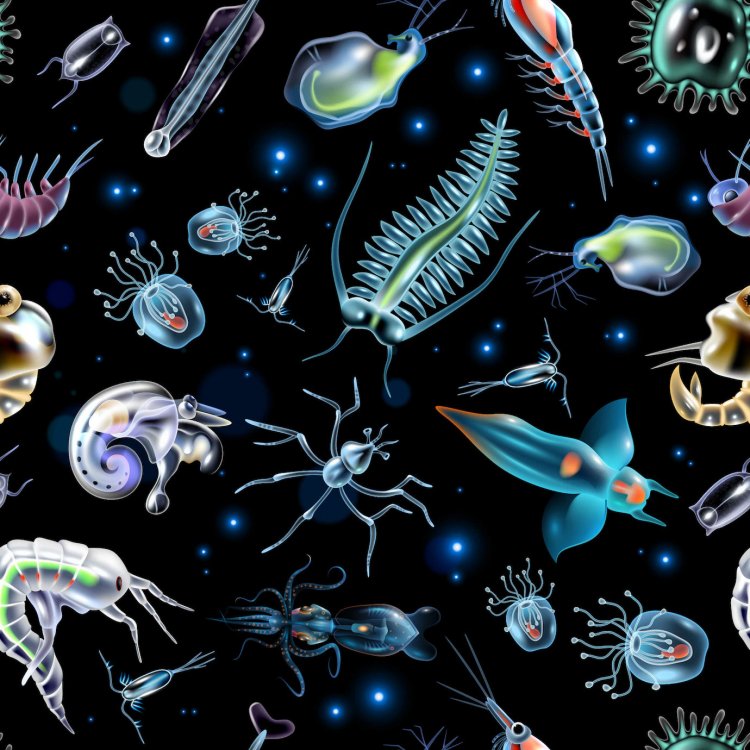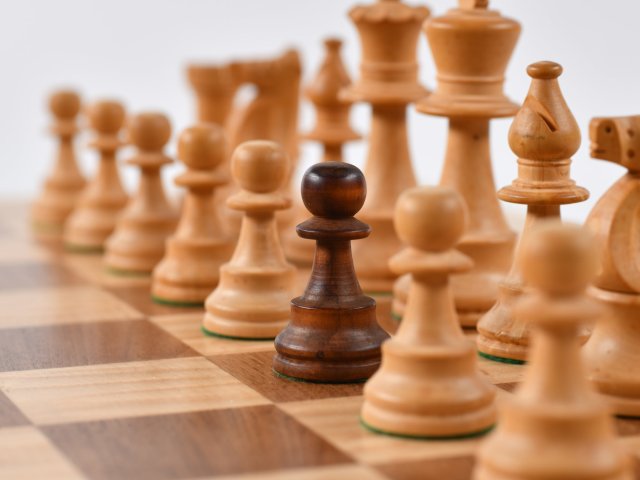What are those things glowing in the darkness of the Black Sea? Definitely not electric bulbs or Christmas lights. They are fascinating creatures, inhabiting the sea along with nimble fish, multicolored corals and predatory sharks. They are plankton – a barely visible but vital part of the Black Sea. Make yourselves comfortable – we are going to look at those microscopic sea dogs and slipper animalcules through a science microscope.
The shining little lights
There are millions of stars shining in the sky, but there is also something like this in the water. Of an entirely different nature though. The plankton light is a biochemical reaction that occurs when luciferin breaks up due to a special enzyme – luciferase. Then a quantum of green lights is emitted. More or less the same thing happens in fireflies, but it is their method to find each other in the dark, while with plankton this chemical reaction protects them from a small plankton predator. All this is called bioluminescence.
Not all plankters glow of course. The glowing ones are mostly dinoflagellates; the sea glows the brightest at the end of summer, when they have multiplied in the warm water. Planktonic crustaceans glow green, while comb-bearers look like large dim lamps glowing with blue-green light when touched by something in the dark water.
Plankton are beings that live in the water mass. Unlike agile sea creatures, they cannot move fast across waves and currents. But they keep their small world – the mass of water around them. In it, there are also tiny plants – unicellular algae, and herbivores and predators: infusoria, crustaceans, larvae of invertebrates and fish, etc. This world and its inhabitants are “soaring” in sea currents and waves.
Planos means soaring in Greek. They cannot sink as they are too fragile to live at the bottom. And many of them (unicellular algae) even have to be close to the surface of the sea as they need sunlight.
Such plankters are hard to see with a naked eye. But that does not mean they are not there. There is a world inside every drop of sea water. But there are some that can been seen without a microscope: agile predators with transparent elongated bodies – Sagitta arrowworms; plankton bristle worms; a 5 mm larva of a swell-fish, which is quite big already and will soon look like an adult fish.
Phytoplankton and zooplankton
Phytoplankton are aquatic organisms that use photosynthesis to feed. Countless bacteria and unicellular algae.
Phytoplankton include photosynthetic bacteria – blue-green algae – as well as algae. They are mainly common in coastal waters, especially in desalinated zones – next to estuaries; there is lot of them in the desalinated and overfertilized Azov Sea.
The plankton high season is late summer – August-September. This is when the water at its warmest, which favors micro creatures. One liter of water drawn near the Black Sea coast on the Caucasus side, may contain 10,000 to 10 million cells of such creatures. Phytoplankton is so small that it is nearly weightless: half a gram per million cells.
Their habitat is the lighted zone of the sea, called photetic, up to 100 m deep. This parameter is important since photosynthesis is vital for them, and photosynthesis needs light. Microscopic algae are able to multiply extremely fast, to the point of doubling their biomass within just 24 hours! That is why they are considered to be the principal marine vegetation. They catch sunlight, then process water and sea salts into their substance, and then grow.
Zooplankton are animal organisms. They are categorized by size:
- micro zooplankton (under 0.5 mm);
- mezo zooplankton (0.5 to 10 mm);
- macro zooplankton (over 10 mm).
Big zooplankton species are the scyphozoan jellyfishes Aurelia and root-mouthed jellyfishes, the comb-bearers Pleurobrachia, Mnemiopsis and Beroe. They are visible without a microscope. Their numbers peak in the warm season when the mass of jelly-bodied plankton reaches dozens or hundreds of grams (sometimes even exceeding 1 kg) per cubic meter of water at the Back Sea coast. However, the biomass of other, small plankters seldom exceeds 10 g/1m3.
Everyone has seen an image of a slipper animalcule (Paramecium caudatum) at least once, but not everyone knows that there are multiple types of such “slippers”. They play a notable role among zooplankton.
The “slippers” are trimmed with thick cilia on all sides, which help them move fast in the water. Thousands of cilia, like thousands of oars are swinging – paddling – fast, pushing the unicellular predator forward. Yes, slipper animalcules are real predators. They can catch a large dinoflagellate and suck it in. Slipper animalcules are the first to attack the overgrown “vegetation” at the time of the fastest growth of plankton algae.
Everyone has known slipper animalcules for a long time, which does not mean that nothing new has happened since it was discovered in samples from the Black Sea. Scientist find new things every year. Sometimes, it’s species that are not typical of the Black Sea, sometimes even totally unknown organisms waiting to be discovered.
Photo on the homepage: LuqueStock / Photo bank Freepik
Photo on the page: macrovector / Photo bank Freepik






















